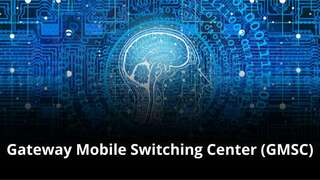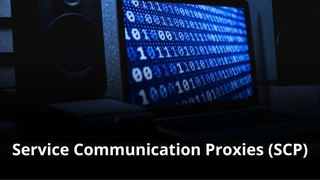Introduction about the Mobility Management Entity (MME)
The Mobility Management Entity (MME) is a critical and foundational component within the architecture of 4G Evolved Packet Core (EPC) networks. Understanding its purpose is essential for comprehending how modern mobile systems manage control-plane signaling, user movement, and security in the absence of traditional circuit-switched elements. This entity acts as the central, authoritative controller for all signaling traffic, idle-mode state, and user context for all devices (User Equipment or UE) across the network. You will find it crucial for any operator aiming to uphold session management, seamless handovers, and robust security in their LTE environment.
What are the details of a Mobility Management Entity (MME)?
- Mobility Management Entity
- Core Utility and Functionality of the MME
- Technical Integration and Data Model
- MME Ownership for MVNOs and IoT Companies
- Organizational Impact of MME Ownership?
- Redundancy and High Availability
- Impact of 5G, 6G, and Cloud-Native Architectures on the MME
- Frequently Asked Questions about the MME
- Summary
History and Evolution of the Mobility Management Entity (MME)
The concept of a central control-plane node began with the inception of the 4G LTE standard. This standard introduced the Mobility Management Entity (MME) as the primary system for managing the control plane, taking over many functions previously handled by the legacy Mobile Switching Center (MSC) in 2G/3G networks. The MME’s original design focused predominantly on supporting session and mobility management, especially for seamless movement and efficient handling of the “always-on” nature of packet data. This reflected a major industry shift from circuit-switched voice to all-IP data. As networks evolved toward 5G (New Radio), the MME remained vital for 4G access, although its functionality and architecture became a blueprint for the subsequent Access and Mobility Management Function (AMF) in the 5G core. Its role is transitioning from a standalone entity to a key component for backward compatibility and inter-generational mobility.
Core Utility and Functionality of the MME
What is the MME Used For?
The Mobility Management Entity (MME) is the definitive source for control-plane logic and state information within a 4G LTE network. Its primary purpose is to hold the comprehensive context and authorized state for all user equipment (UE) accessing the network. This includes the essential International Mobile Subscriber Identity (IMSI) and temporary IDs. It is crucial for managing mobility, security, and establishing data bearer paths. Deploying an MME is necessary to ensure users can connect, register, authenticate, and seamlessly maintain connectivity while moving between cells or when waking up from an idle state.
Key Functions of the Mobility Management Entity (MME)
Lets investigate the core functions of the Mobility Management Entity (MME) to understand its critical role in LTE network operations:
- Paging and Idle Mode Management: It tracks the location of UEs in the idle state (RRC-Idle) to efficiently page them when incoming data or services arrive.
- Authentication and Security: It initiates the authentication process by interacting with the Home Subscriber Server (HSS) and selects the appropriate security algorithms.
- Bearer Management Signaling: It signals the establishment, maintenance, and release of the data bearers (tunnels) used for user traffic, via the Serving Gateway (S-GW).
- Tracking Area List Management: It manages the list of Tracking Areas (TAs) where an idle UE is known to be located, minimizing signaling for movement within that list.
- Intra-LTE Handover Control: It coordinates the signaling required for a seamless handover of a moving UE between two eNodeBs (base stations) within the LTE network.
- Inter-System Mobility: It handles the complex procedures for a UE moving between 4G and 2G/3G legacy networks (SGs/S3 interfaces), maintaining service continuity.
- Session Management: It maintains the control-plane state and context for all active sessions, coordinating with the Packet Data Network Gateway (P-GW) for IP allocation.
- UE Reachability: It stores the MM (Mobility Management) and EPS (Evolved Packet System) security context for UEs, facilitating quick access and verification.
- Serving Gateway (S-GW) Selection: It selects the appropriate S-GW for the UE during the initial connection setup based on network topology and load.
Technical Integration and Data Model
The Mobility Management Entity (MME) does not operate in isolation; it is a centrally connected network element. Examine its key integration points to appreciate its centrality in 4G control-plane systems. It connects primarily to the eNodeB (the base station) over the S1-MME interface for all control signaling. It also interfaces with the Serving Gateway (S-GW) over the S11 interface to manage user plane tunnels. Crucially, it connects to the Home Subscriber Server (HSS) over the S6a interface for authentication and retrieving user profile data. Finally, it interfaces with the legacy MSC via the SGs interface for fallback to 2G/3G voice services.

Technical Data Model and Key Interfaces
The Mobility Management Entity (MME) employs a structured Technical Data Model to store temporary and permanent user context. This model dictates how subscriber state (e.g., location, security keys, bearer IDs) is efficiently organized and stored, facilitating fast mobility and session checks across the network. Key interfaces utilized by the MME are predominantly based on the GTP (GPRS Tunneling Protocol) and Diameter protocol suites:
- S1-MME: Used for control-plane communication with the eNodeB, handling Attach, Detach, and Handover procedures.
- S11: Uses GTP-C (Control) for communication with the S-GW to establish and modify data bearers.
- S6a: Uses the Diameter protocol for signaling with the HSS to manage authentication and subscriber profile access.
- SGs: Used for signaling with the legacy MSC for circuit-switched fallback and SMS over non-data networks.
MME Ownership for MVNOs and IoT Companies
Why Own an MME?
For a Mobile Virtual Network Operator (MVNO) or an IoT company, owning a dedicated Mobility Management Entity (MME) (or more commonly, utilizing a virtualized/integrated MME functionality) can be a strategic necessity. Consider that this entity is the fundamental system for basic network access control. Owning it allows these companies to gain significant control over UE registration, security initiation, core-network routing, and the customization of mobility policies (e.g., specific idle-mode timers for IoT). This level of control is not available when fully relying on the host Mobile Network Operator’s (MNO’s) MME, which treats the MVNO’s traffic as a secondary priority.
Advantages and Disadvantages of NRF Ownership
Direct Control over signaling flows and custom mobility policies (e.g., power-saving for IoT).
Fast On-boarding and immediate control over new device types and specific UE features.
Customized Authentication and security logic tailored for enterprise or IoT security needs.
Enhanced Visibility into all connection and mobility events, enabling better service assurance.
Potential Signaling Cost Savings by avoiding MNO per-transaction or session-based MME fees.
High Initial Investment in specialized core network software and platform infrastructure.
Operational Complexity requiring expertise in GTP, Diameter, and control-plane signaling.
Maintenance and Upgrade Costs for a critical, 24/7, high-availability control system.
Interconnection Challenges with the host MNO’s radio access and S-GW infrastructure.
Rapid Technology Obsolescence as the MME’s function is evolving into the 5G AMF.
Organizational Impact of MMF Ownership
Analyzing the organizational impact of owning a Mobility Management Entity (MME) across various business units.
Operational Impact: Requires the establishment of a dedicated technical team proficient in GTP/Diameter signaling, control-plane monitoring, and high-availability database operation. This team will monitor MME performance, manage core network upgrades, and handle all mobility and session troubleshooting. Recruitment of specialized personnel with expertise in EPC signaling becomes essential.
Financial Impact: Evaluate the significant capital expenditure (CapEx) for the initial hardware and software license purchase. There will also be high ongoing operational expenditure (OpEx) for power, cooling, maintenance contracts, and highly skilled staff salaries. Ownership converts a reliance fee into a complex, managed asset cost.
Commercial Impact: Leverage the MME for highly flexible and immediate control over UE access and policy enforcement. This enables swift deployment of new services requiring specific control-plane handling. It supports faster security and authentication response than relying on a host MNO’s congested or time-consuming processes.
Technical Impact: Mandates the implementation of detailed protocols for managing the subscriber context database integrity and security. The company must own the end-to-end responsibility for system stability, security patching, and ensuring correct interfacing with the eNodeB and S-GW.
Redundancy and High Availability

The Mobility Management Entity (MME) is a single, central point of failure for all control-plane signaling and session context within the 4G network; therefore, Redundancy and High Availability (HA) are absolutely critical requirements. Implement a fully redundant system architecture, which is usually achieved through clustered, geographically redundant MME pools or active-standby virtualized setups. This design ensures service continuity and seamless mobility even during catastrophic site failure, allowing UEs to re-attach to a healthy MME. Methods like hot standby, load balancing, or N+1 redundancy within a pool configuration are standard practice. The system must also employ rigorous context synchronization mechanisms. These mechanisms guarantee that the primary and backup contexts are continuously synchronized to prevent session loss. Ensure that automated failover procedures are in place to minimize any period where the network cannot register or move a device.
Impact of 5G, 6G, and Cloud-Native Architectures on the MME
MME’s Transition
With the arrival of 5G (New Radio), the dedicated Mobility Management Entity (MME) has been conceptually superseded by the Access and Mobility Management Function (AMF). While the MME still exists as an anchor for all 4G access, its core mobility function is carried forward by the AMF in the 5G core. The MME remains a crucial component for interworking and managing mobility between 4G and 5G networks, especially through the N26 interface which allows seamless handovers between the two generations.
5G and 6G Architecture
In the 5G core, the functionality has been separated and modularized, with control-plane functions like access and mobility being managed by the AMF. The MME’s remaining security functions are handled by the Security Edge Protection Function (SEPF), alongside the overall policy management functions. The need to securely manage UE context and mobility remains. The concept will further evolve in 6G toward more distributed, cloud-native solutions, likely leveraging advanced software-defined networking (SDN) and Network Function Virtualization (NFV) principles. However, the fundamental role of securely storing and managing the master UE control-plane state—the core function of the MME—will always remain necessary, albeit implemented using advanced, containerized technologies.
Frequently Asked Questions about the Mobility Management Entity (MME)
1. What is the main function of the MME?
The primary function of the MME is to manage the control-plane signaling for all UEs in the 4G network, handling mobility (handover) and security (authentication) procedures.
2. What is the S6a interface used for?
The S6a interface is the Diameter-based link between the MME and the HSS, used to retrieve user profile information and perform network-level authentication.
3. How does the MME manage an idle device?
The MME tracks the device’s location using a Tracking Area List (TAL). When a service needs to reach the device, the MME coordinates a network-wide Paging message via the eNodeBs.
4. What is an MME Pool?
An MME Pool is a logical group of multiple MME nodes that share a common signaling area. This provides redundancy, load balancing, and allows a UE to re-attach to any available MME in the pool.
5. Is the MME replaced in the 5G network?
Yes, the MME is functionally replaced by the Access and Mobility Management Function (AMF) in the native 5G core. However, the MME remains to support 4G access and seamless mobility between 4G and 5G via the N26 interface.
Summary
The Mobility Management Entity (MME) is the central, authoritative controller that securely manages all control-plane signaling, user security, and mobility management in the 4G (LTE) Evolved Packet Core. Acquiring and operating an MME, often as a virtualized or integrated software function today, offers MVNOs and IoT companies significant advantages in service customization, fraud prevention, and direct control over mobility policies. However, this decision involves substantial operational complexity and requires specialized GTP/Diameter technical expertise. While the MME is largely replaced by the AMF in 5G, its conceptual role—that of the master control-plane repository—remains fundamental to all generations of mobile communication.

























